Machine Grape Harvest
Once the grapes reach the perfect balance of acidity and sugar that will be transformed into alcohol, the grapes are then picked either by hand or machine. For the white grapes in the Loire this is in late August and for the red grapes mid September at an alcohol content of around 12 degrees and total acidity of 5mg per litre (H2SO4/l).
Machine harvesting begins early in the morning before the sun rises to ensure the fruit is brought into the winery at cool temperatures which helps to avoid oxidization. Our harvester is a Pellanc, a French designed and made machine, straddles a row of grapes, and inside there are 14 flexible fiberglass rods…a little like a rib cage. The driver’s seat is about 15 feet above the ground where I can see over the top of the vines. As we head down a row, the rods gently shake back and forth. They are adjusted so that they firmly hold onto each vine for an instant as the machine passes. The shaking motion is tuned to a particular frequency, typically between 480 and 560 beats per minute. This movement of the vine causes the berries to fall off the stem, leaving the stem attached to the vine. The grapes fall to the sides of the machine where conveyer belts carry them into two bins on the shoulders of the machine. Along the way, there are a few high speed fans that remove leaves and other debris that may have fallen from the vines along with the fruit.
Once the shoulder bins are full the harvester reverses up to a waiting trailer and hydraulic jacks then push up the bins and empty the beautiful grapes and juice into the trailer that is then carried off to the winery.
Machine harvesting is used to make Chateau Pas de Loup’s Sauvignon Blanc and Rose de Loire



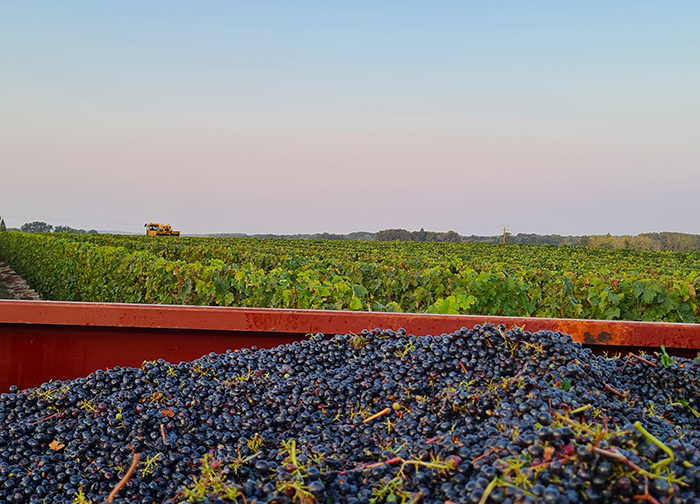
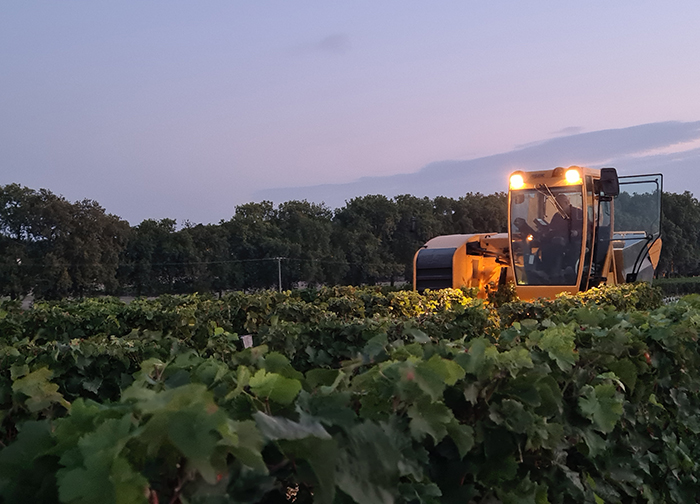
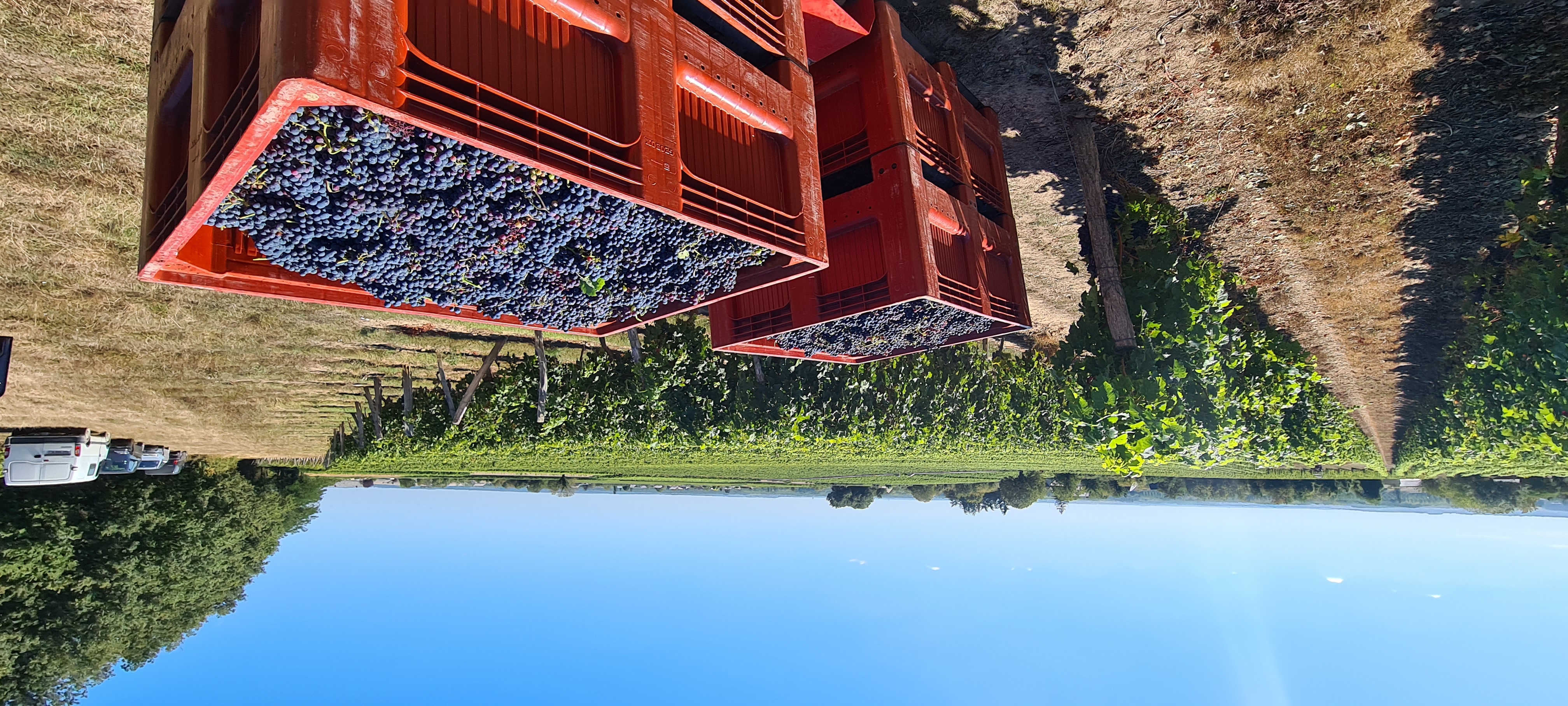

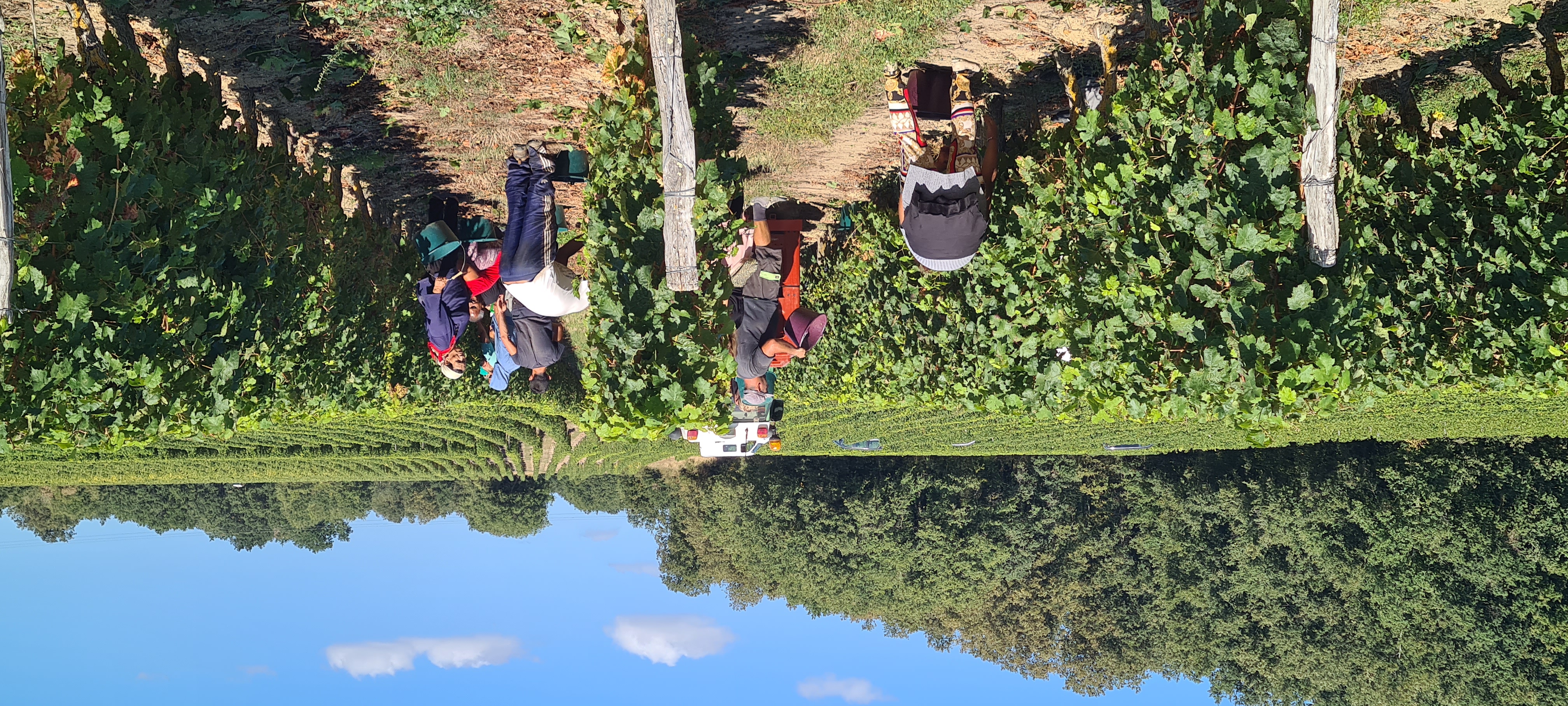


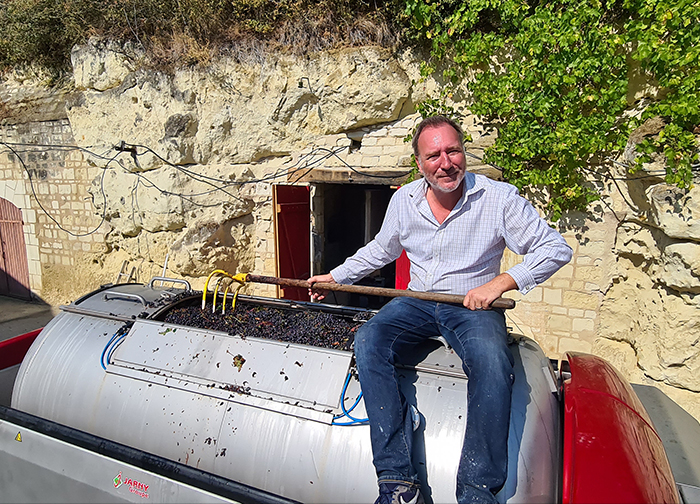

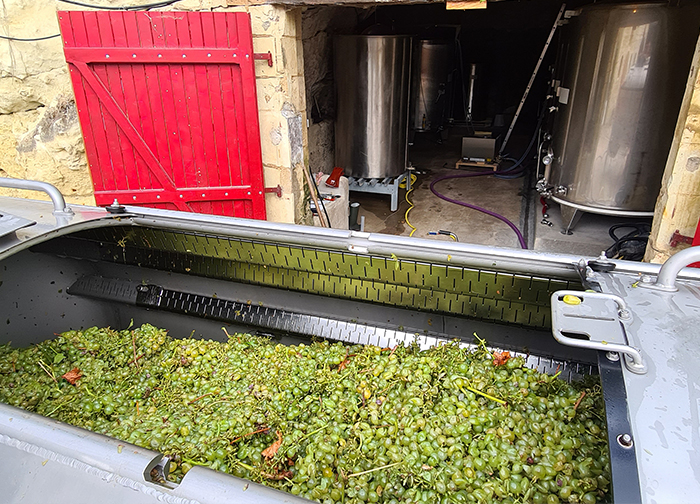

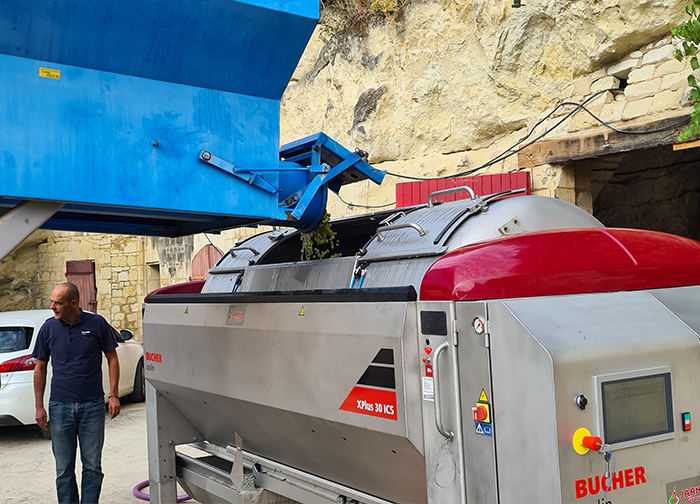
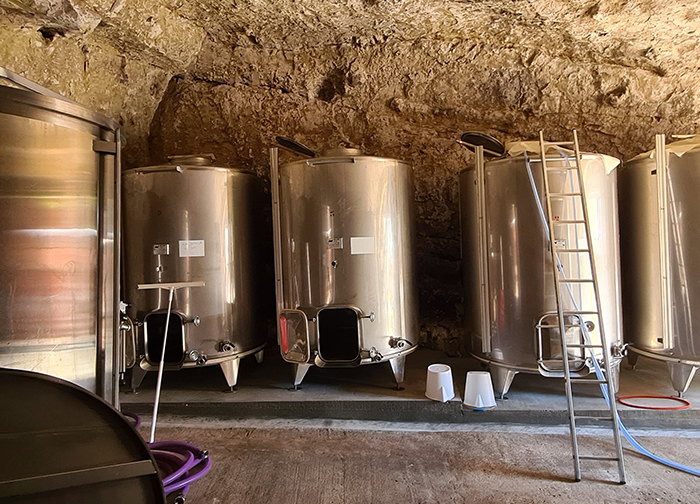
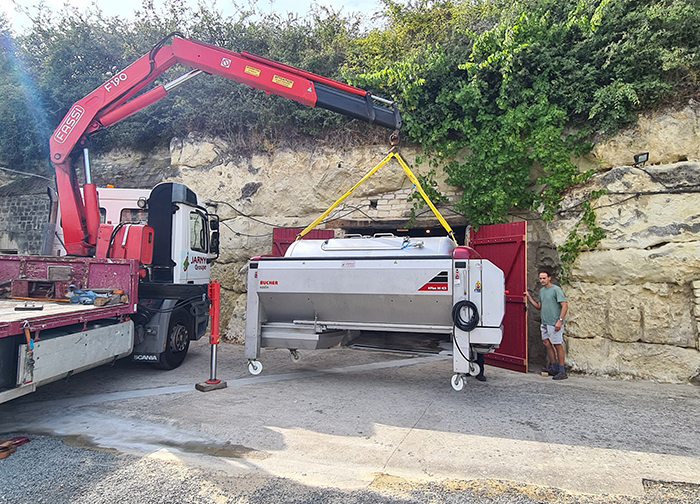



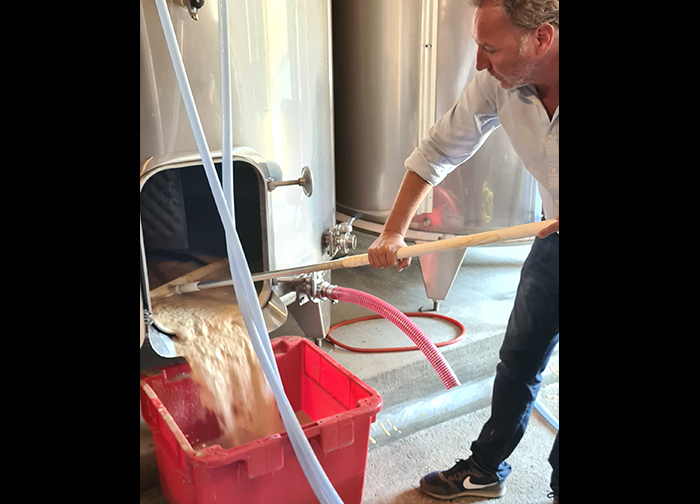
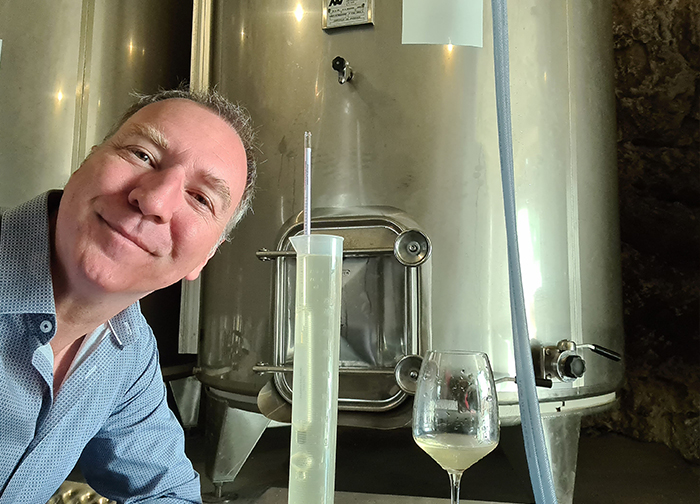
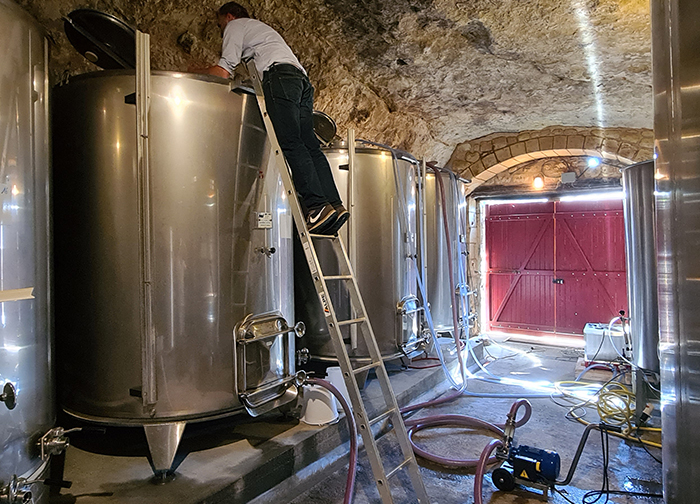


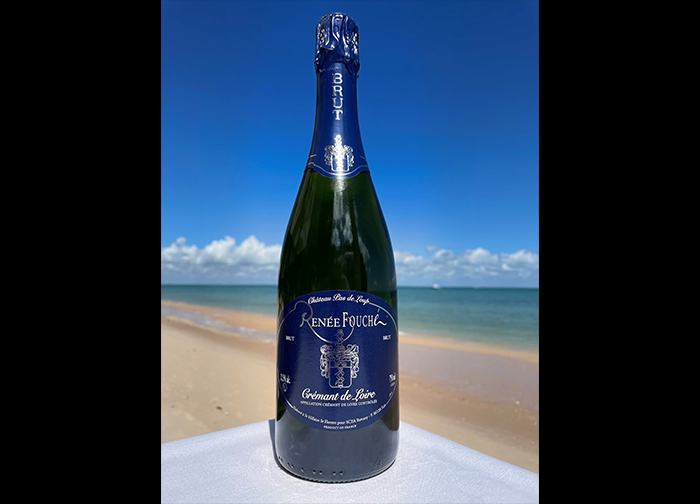


 © . All rights reserved |
© . All rights reserved |